Many viruses have been spreading in different parts of the world lately, and it is important to know about the most dangerous viruses out there. Some of these viruses might be in a different areas from where we live in, but it doesn’t mean that it is safe. People travel all the time, and sometimes they carry unknown diseases or viruses as they leave their countries. Today, we are going discuss about some of the most dangerous viruses in the world so let’s find out together.
10Lassa Virus
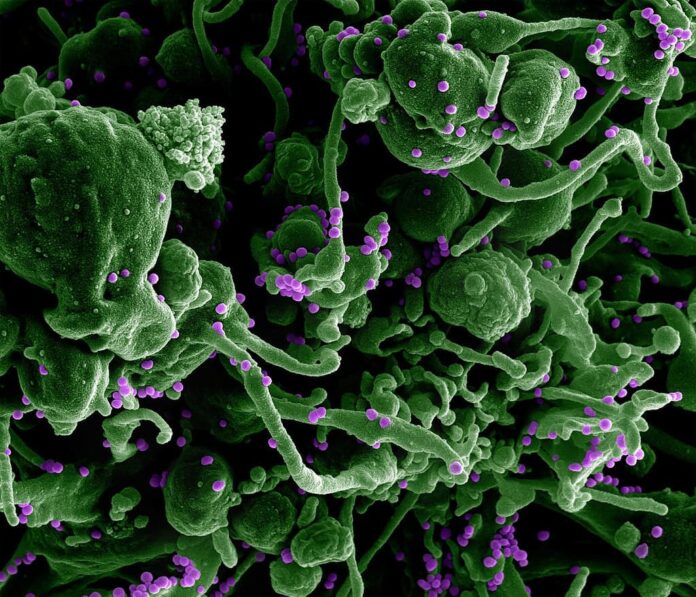
Lassa virus is an arenavirus that causes Lassa hemorrhagic fever in both humans and primates. It is animal-borne and endemic in West African countries, especially in Sierra Leone, the Republic of Guinea, Nigeria, and Liberia. This virus leads to a fever that infects between 300,000 and 500,000 people with around 5,000 deaths each year.
Spread
Lassa virus spreads to humans from other animals, specifically the natal multimammate mouse (African rat) which is the most common mouse in equatorial Africa. These rats are common in human households, and some areas even eat them as a delicacy. The infected rodents are able to excrete the virus in urine for an extended time period or for the rest of its life.
At home, these rats colonize areas where food is stored, and that is how humans got the virus that develops into Lassa fever. There are other ways that the rodents can transmit the virus like through touching soiled subjects or exposure to open cuts or sores. Direct contact transmission is common because these rats often scavenge on leftover human food items or poorly stored food.
Symptoms
Signs and symptoms of Lassa fever typically occur between 1 to 3 weeks after the patient comes into contact with the virus. 80% of those who are infected have little or no symptoms occurring at all. For those who have, mild symptoms may include fever, tiredness, weakness, and headache. As for severe symptoms, they include bleeding gums, breathing problems, vomiting, facial swelling, chest pain, or dangerously low blood pressure. Death often occurs within 14 days of onset, but only 1% of all Lassa virus infections result in death.
Treatment
During hospitalization, Lassa fever patients are treated with Ribavirin and antiviral drug that shows effectiveness. So far, there are no approved vaccines against Lassa fever for use in humans.
9Crimean-Congo Fever Virus
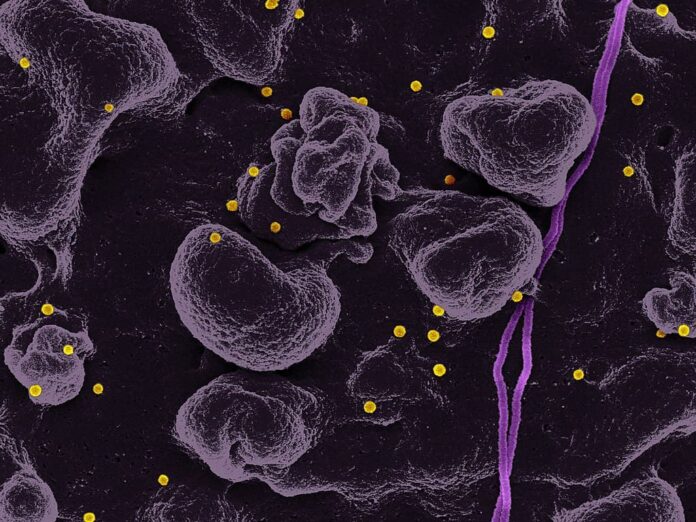
This virus is tick-borne, and it causes Crimea-Congo fever which first started in Crimea in 1944. Later, the fever spread to Africa, Eastern Europe, Central Asia, the former Soviet Union, throughout the Mediterranean, northwestern China, the Middle East, and the Indian subcontinent. Since the outbreaks, there have been more than 50 cases, and the risk of death among those affected is between 10% and 40%.
Spread
The fever spreads to humans either by tick bites or through contact with viraemic animal tissues during and immediately after the post-slaughter of animals. Transmission to humans occurs through contact with infected ticks or animal blood. The transmission from one human to another by contact with infectious blood or body fluids. The spread of the fever has also occurred in hospitals due to improper sterilization of medical equipment, reuse of injection needles, and contamination of medical supplies.
Symptoms
The onset of the fever is sudden with initial signs and symptoms including headache, high fever, back pain, joint pain, stomach pain, and vomiting. Apart from that, there are other common symptoms like red eyes, flushed face, red throat, and petechiae on the palate. Other symptoms may include jaundice, and in severe cases, changes in the mood and sensory perception also occur. As the illness progress, large areas of severe bruising, severe nosebleeds, and uncontrolled bleeding at injection sites that last for days.
Treatment
The treatment for the fever is primarily supportive, and there should be careful attention to fluid balance and correction of electrolyte abnormalities. The virus is sensitive in vitro to the antiviral drug ribavirin, and it has provided benefits in the treatment of patients. A vaccine for this fever and virus is not commercially available.
8Avian Influenza

Avian influenza refers to the disease caused by infection with avian (bird) influenza (flu) Type A viruses. Naturally, these viruses occur among wild aquatic birds worldwide and they can infect domestic poultry, other birds, and other animal species. Avian flu viruses rarely infect humans; however, the exceptions are the H7N9 and H5N1 which can infect humans. There have been several major outbreaks occurred sporadically worldwide since the first outbreak in Italy in 1878. Back in 2017, there were 1565 people infected with H7N9, and 610 (39%) of them died. As for H5N1, it killed nearly 60% of those who infected since its discovery in humans in 1997.
Spread
Avian influenzas are deadly to birds, and they can easily affect humans and other animals that come in contact with a carrier. Bird flu has the ability to survive for extended periods of time, and touching contaminated surfaces can spread the infection. The first group of people who are at risk the most with avian influenza is poultry farmers. People who visit the affected areas or are exposed to infected birds, and people who eat undercooked poultry or eggs also face the risk. Human-to-human transmission is inefficient, only through a contraction with infected birds and poultry is possible for the virus to pass.
Symptoms
The symptoms of avian influenza in humans range from flu-like symptoms (fever, cough, sore throat) to severe respiratory illness (chest infection). The incubation period ranges from 7 to 10 days, and the more virulent forms can result in respiratory failure, multi-organ failure, and death. The first symptoms often include fever and flu-like symptoms such as body aches and headache, other possible symptoms are diarrhea, nausea, and vomiting.
Treatment
Since different types of bird flu can cause different symptoms, treatments also vary as well. In most cases, treatment with antiviral medication such as oseltamivir or zanamivir can help to reduce the severity of the disease. This medication must be taken within 48 hours after the symptoms first appear so that it can be effective. As for family members or those who are in close contact with the patients must also receive the prescription to prevent measures.
7Hantavirus
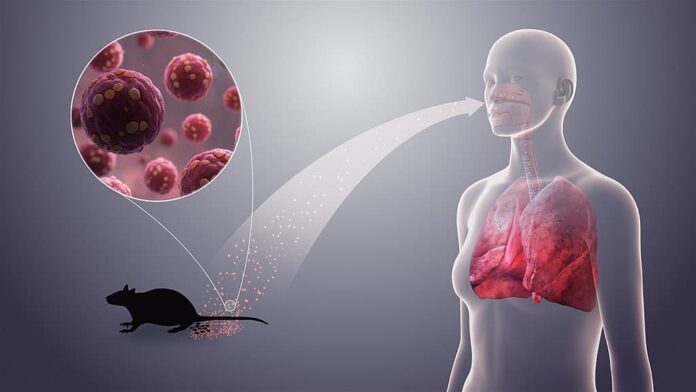
Hantavirus is a family of viruses spread mainly by rodents and can cause varied disease syndromes in people worldwide. There are two types of Hantavirus known by people: New World Hantavirus found in the Americas and Old World Hantavirus found in Europe and Asia. The diseases caused by the virus are fatal with a mortality rate of 38%. Most of the cases occur in rural areas where forests, fields, and farms offer suitable habitats for the virus’ rodent hosts.
Spread
Each Hantavirus serotype has a specific rodent host species, and it spreads to people via an aerosolized virus that is shed in urine, feces, and saliva. Bites from the infected hosts are also a possible cause of the virus to spread as well.
Symptoms
The symptoms of the virus may develop between 1 to 8 weeks after exposure to fresh urine, droppings, or saliva of infected rodents. Early symptoms include fatigue, fever, and muscle aches, especially in the large muscle groups like thighs, hips, back, and sometimes shoulders. Some other times, there may be headaches, dizziness, chills, and abdominal problems like nausea, vomiting, diarrhea, and abdominal pain.
Treatment
There is no specific treatment, cure, or vaccine for Hantavirus infection at all at the moment. The only way to treat the virus is when the patients recognize the symptoms early and receive medical care in an intensive care unit. In intensive care, patients are intubated and given oxygen therapy to help through the period of severe respiratory distress.
6Zika Virus
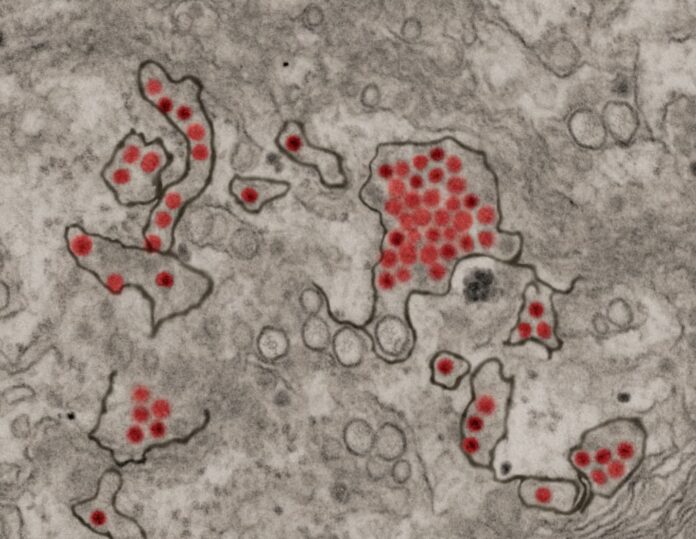
Aedes mosquitoes, which bite during the day and night, are the cause of the Zika virus that leads to Zika disease. It was first identified in Uganda in 1947 in monkeys before humans got it in 1952. Zika virus can cause serious complications in unborn babies like congenital brain abnormalities and abnormalities when contracted by pregnant women. The outbreaks of Zika virus disease have been in Africa, the Americas, Asia, and the Pacific.
Spread
There are four main ways that Zika can be transmitted including mosquito bites, sex, blood transfusion, and from a pregnant woman to her fetus.
Symptoms
The incubation period of Zika virus disease is between 3 to 14 days, and many people do not develop symptoms. In case they do, the symptoms are mild including fever, rash, conjunctivitis, muscle and joint pain, malaise, and headache. These mild symptoms usually last between 2 to 7 days. Usually, people don’t get sick enough to go to the hospital and they rarely die of Zika. In fact, symptoms of Zika are similar to other viruses spread through mosquito bites like dengue and chikungunya.
Treatment
There is no vaccine or medicine for Zika. To treat the symptoms, the patients should get plenty of rest, drink fluids to prevent dehydration, and avoid aspirin. Instead, you should take medicine such as acetaminophen to reduce fever and pain. The best option is to talk to your healthcare provider before taking additional medication.
5Severe Acute Respiratory Syndrome (SARS)
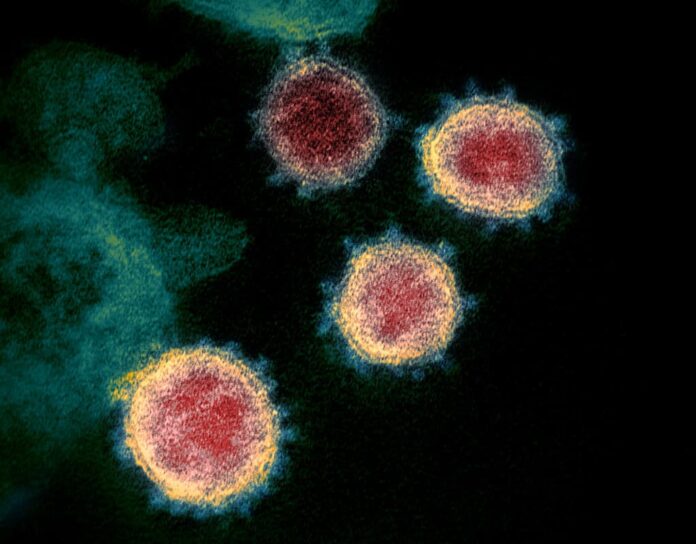
SARS is a serious form of pneumonia that causes acute respiratory distress (severe breathing difficulty), and sometimes death. SARS is caused by a member of the coronavirus family of viruses which is the same family that causes the common cold. The outbreak of this virus began in 2003, and it became an epidemic as it killed so many lives.
Spread
The virus spread from uncooked or undercooked small mammals to people in the city of Wuhan, China. Then it spreads from one person to another by coughs or sneezes as the infected droplets spray into the air. People can catch the SARS virus if they breathe or touch those particles. The virus may live on hands, tissues, and other surfaces for up to several hours in those droplets. Even worse, the virus may be able to live for months or years when the temperature is below freezing.
Symptoms
The symptoms usually occur about 2 to 10 days after coming in contact with the virus. People with active symptoms of the illness are contagious, and they may be able to spread the virus at this stage. The main symptoms of SARS are cough, difficulty breathing, high fever, and other breathing symptoms. The most common symptoms include chills and shaking, cough, headache, muscle aches, and tiredness.
Treatment
The treatments for the SARS virus are the use of antibiotics, antiviral medicines, high doses of steroids, and oxygen for breathing support.
4Middle Eastern Respiratory Syndrome Coronavirus (MERS-CoV)

First identified in Saudi Arabia back in 2012, MERS is an emerging viral respiratory disease caused by the MERS coronavirus. Since then, there have been around 2000 cases of the virus in over 20 countries with no signs of ceasing. In Europe, some countries have reported confirmed cases with both direct and indirect connections with the Middle East. About 3 to 4 out of 10 patients died of the virus, according to the Centers for Disease Control and Prevention (CDC).
Spread
The contraction of the virus is from direct and indirect contact with infected dromedary camels, and further transmission is through bodily fluids. The dromedary camels are a major reservoir host for MERS-CoV, and they are the animal source of MERS infection in humans. Consuming unpasteurized or uncooked animal products is also the cause of the transmission of the virus as well. Human-to-human spread is possible through close contact such as caring for or living with an infected person.
Symptoms
The symptoms of MERS range from none to mild or severe respiratory ailments such as fever, cough, shortness of breath, pneumonia, etc. The incubation period can be anything from 2 to 24 days with an average of 5 days. The symptoms start with fever, cough, chills, and headaches followed by nausea, abdominal pains, dizziness, and sore throat. The disease exhibits a wide range of presentations at diagnosis from no symptoms to subtle signs of pneumonia to multi-organ failure. That is why it has the capacity to progress rapidly to cause death.
Treatment
There is no specific treatment for MERS-CoV besides supportive care, and there is no effective vaccine available yet.
3Ebola Virus
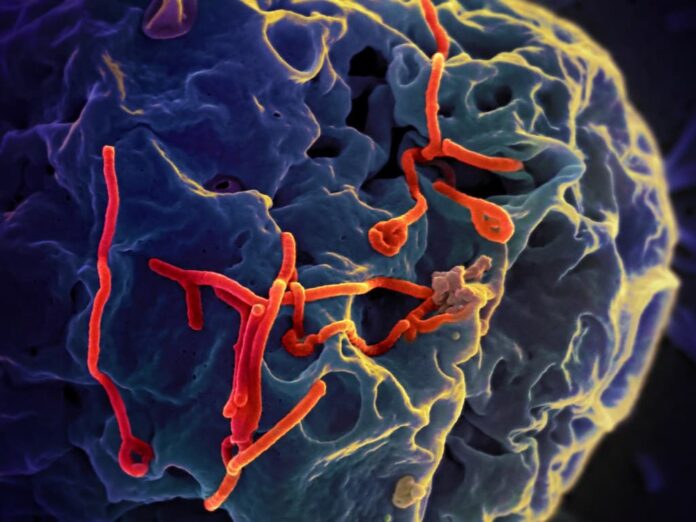
Ebola is a rare but deadly disease caused by Ebola filovirus that can be fatal if left untreated. There are 5 different types of ebola virus, and four of which are known to cause diseases in humans. Ebola was first discovered in 1976, and fruit bats are thought to be the most likely natural permanent host of the virus. The most significant outbreak of Ebola in recorded history occurred from 2014 to 2016, predominantly in Guinea, Sierra Leone, and Liberia.
Spread
The virus readily spreads to humans, and from human to human by direct contact with an infected person or animal (either living or dead). Another common way that Ebola is spread is the direct contact with objects such as contaminated needles and syringes. Apart from that, objects like clothes or bedding contaminated with body fluids from a person who is sick can also spread the virus. A person can only spread Ebola to other people after they develop signs and symptoms of Ebola.
Symptoms
The incubation period for the Ebola virus can be from three to eight days, and the signs or symptoms do not develop right away. The onset of the symptoms is sudden including fever, severe headache, bruising, fatigue, nausea, diarrhea, abdominal pain, and death. In the most severe case, there will be bleeding from the gastrointestinal tract and other orifices. As the virus spreads through the body, it damages the immune system and organs. Ultimately, it causes levels of blood-clotting cells to drop which leads to severe and uncontrollable bleeding.
Treatment
Currently, there is no antiviral drug to treat Ebola in people, but there are a few treatments such as:
- Providing fluids and electrolytes (body salts) through infusion into the vein (intravenously)
- Offering oxygen therapy to maintain oxygen status
- Using medication to support blood pressure, reduce vomiting, and diarrhea, and to manage fever and pain
- Treating other infections if they occur
- The vaccine, called rVsV-ZEBOV had developed and was being used in the ongoing 2018-2019 Ebola outbreak in the Democratic Republic of the Congo.
2Marburg Virus
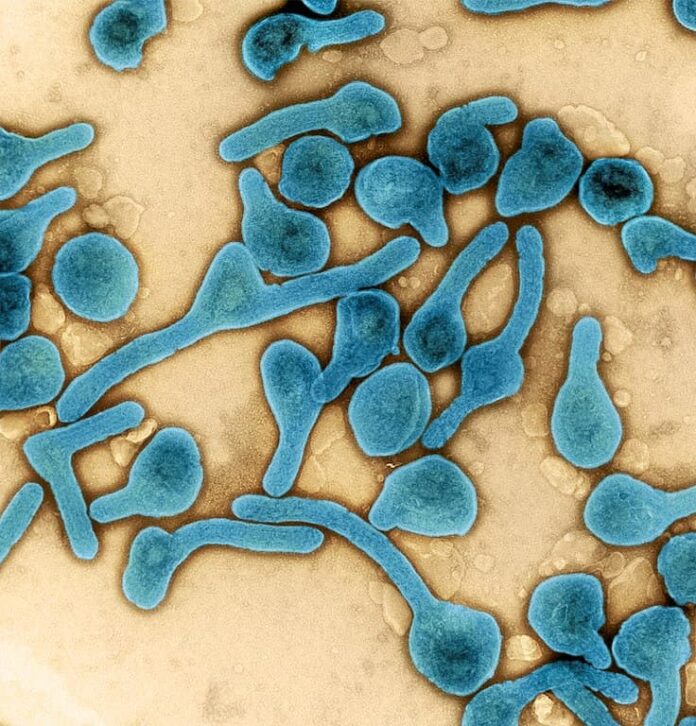
Belongs in the same group of hemorrhagic viruses as Ebola, Marburg virus can cause a very fatal disease in humans. The virus can cause bleeding from internal organs and bodily orifices in both humans and non-human primates. There have been two big outbreaks of Marburg disease in Marburg and Frankfurt in Germany, and Serbia in 1967. That was when German workers were exposed to tissues of infected grivet monkeys at the city’s former main industrial plant. There were 31 of them became infected, and seven of them died.
Spread
The virus spreads by prolonged exposure to mines or caves inhabited by Rousettus bat colonies. The spread of human-to-human is possible via direct contact (through broken skin or mucous membranes) with blood, secretions, organs, etc. of the infected people. Direct contact with surfaces and materials like bedding and clothing contaminated with these fluids is also possible for transmission. The incubation period of the Marburg virus varies from 2 to 21 days from the onset of symptoms.
Symptoms
The illness caused by Marburg virus begins abruptly with high fever, severe headache, and severe malaise. Other common features are muscle aches and pains before severe watery diarrhea, abdominal pain, cramping, nausea, and vomiting appear, mostly on the third day. Diarrhea can persist for a week, and the patients have a ghost-like appearance at this point of the phase. The appearance includes drawn features, deep-set eyes, expressionless faces, and extreme lethargy. In fatal cases, death occurs most often between 8 and 9 days after symptoms onset, usually preceded by severe blood loss and shock.
Treatment
The treatment of this fever is by supportive care by providing rehydration with oral or intravenous fluids, and treatment of specific symptoms. To this day, there is no proven treatment available for Marburg virus disease yet.
1Covid-19
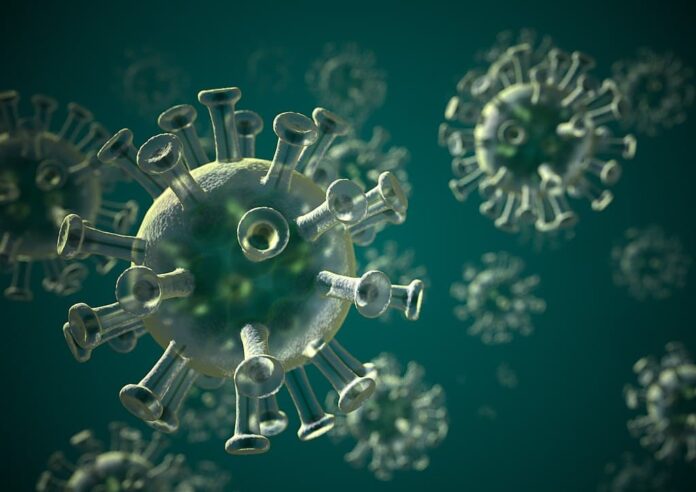
Known as Wuhan Coronavirus during its first outbreak in late 2019 in Wuhan, China, Covid-19 is extremely dangerous. Like other coronaviruses, they originated in animals and then migrated to humans via food and direct contact. As you are reading, the number of people who becomes infected and the number of people who dies is also increasing. In less than two months, more than 64,000 people have become infected in different parts of the world. There were about 5 million people left Wuhan, some carry the virus while others don’t, and travel to many countries. World Health Organization (WHO) has announced the outbreak as an emergency because it affects many countries with poor healthcare systems.
Spread
Many of those who were infected are the people who worked or frequently shopped in the Huanan seafood wholesale market of Wuhan city. It is believed that the virus came from bats and pangolins which are the popular animals that Wuhanian consumed. Once infected, the virus can spread from another person through direct contact, coughing, and sneezing. Touching the same objects as the infected patients without washing hands can also transmit the virus. The virus can also spread through the eyes, according to doctors. This virus is extremely contagious, and elderly people or those with existing respiratory or immune problems are the most vulnerable.
Symptoms
The virus causes pneumonia, and patients with this virus suffer coughs, fever, and breathing difficulties. In severe cases, organ failure is likely to occur.
Treatment
As it causes very serious pneumonia, antibiotics are of no use to treat this virus. The antiviral drugs that people have been using against the flu will also not work with this virus either. If the patients found that they have the virus, they may get support for their lungs and other organs as well as fluids. The recovery of the virus depends on the strength of the immune system. Many of those who have died were already in poor health which is why the death toll keeps on increasing.
Related Post: Incurable Diseases You Might Not Know




